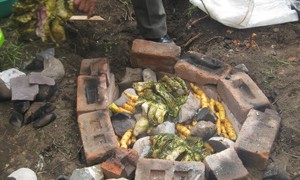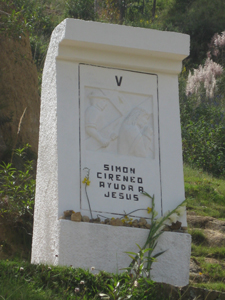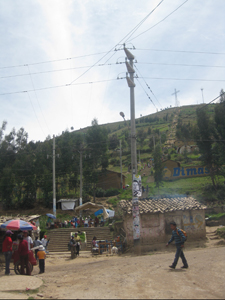The more I take combis (Peruvian public transportation) in Huancayo, the more I envision the combi as a microcosm of Peruvian life.
Resourcefulness
Today I rode a combi that had a little speaker hanging dangerously over the heads of some passengers. It was tied onto an inner metal support bar and wired to the front of the van somehow so that people in the back could enjoy the same Peruvian cumbia music as the driver. It wasn’t even working, but it’s the thought that counts.
Last week, when I hopped onto a combi to escape the pouring rain, there was a leak near the window and rain was dripping onto one of the seats. They stuffed a cloth into the crack to stop the leak. It would be temporary. The combi worked fine when it wasn’t raining. They were never going to fix that window.
To me, these are examples of resourcefulness and of taking advantage of what’s available. They’re examples of being okay with imperfection. The lesson is to care less about the little details and more about making something functional. It’s about using something for its full worth and then finding ways to extract even more out of it, instead of continually buying the latest gear or replacing the whole package because of a tiny tear.
Tolerance
I have been on various interrupted combi rides. Sometimes the combis take a different route because there’s a parade or party going on downtown. Sometimes they take shortcuts without warning their passengers or explaining why. Sometimes the police will stop the combi for going too fast or taking passengers in undesignated areas, and everyone on the combi has to wait.
It’s impossible to know what to expect and things aren’t always fair, but they happen so you live with them. People learn to let things go. Maybe sometimes toleration is expressed as repression or resignation, but what’s important is knowing when to choose their fights. Toleration can also be seen as a type of acceptance. In the grand scheme of things, life isn’t ever fair and this realization melts indignation and demands respect.
Community
At any given time, you may ride a combi in the company of dogs, chickens, piglets, or even sheep. The owners often hop on with large mantas (a large cloth ladies use to carry load on their back), filled with what they’ve bought at the market as if their mantas were large purses and shopping bags combined into one.
There are unspoken rules to help each other out. The cobrador (money collector) always helps the ladies with their things, especially if they have extra boxes. The passengers get up to give the ladies their seats. Not only do these ladies get priority seating, but I’ve also seen people get up for seniors and pregnant women just like in Canada.
Sometimes, a child or recovering drug addict gets on the combi to sing or tell their life story, and then ask for our “collaboration” with whatever we can spare. You see the nod of the cobrador: “Come on in. I know what it’s like to live a hard life too.” And after the presentation, the passengers on the combi share — at least half of them.
There’s poverty here, but it hasn’t become cut-throat, at least not in the Andes. There’s still a sense of community. It’s near impossible to live an isolated lifestyle. Huancainos know that no man is an island and being packed into a combi together is only a physical affirmation of the links between you and your neighbours.






